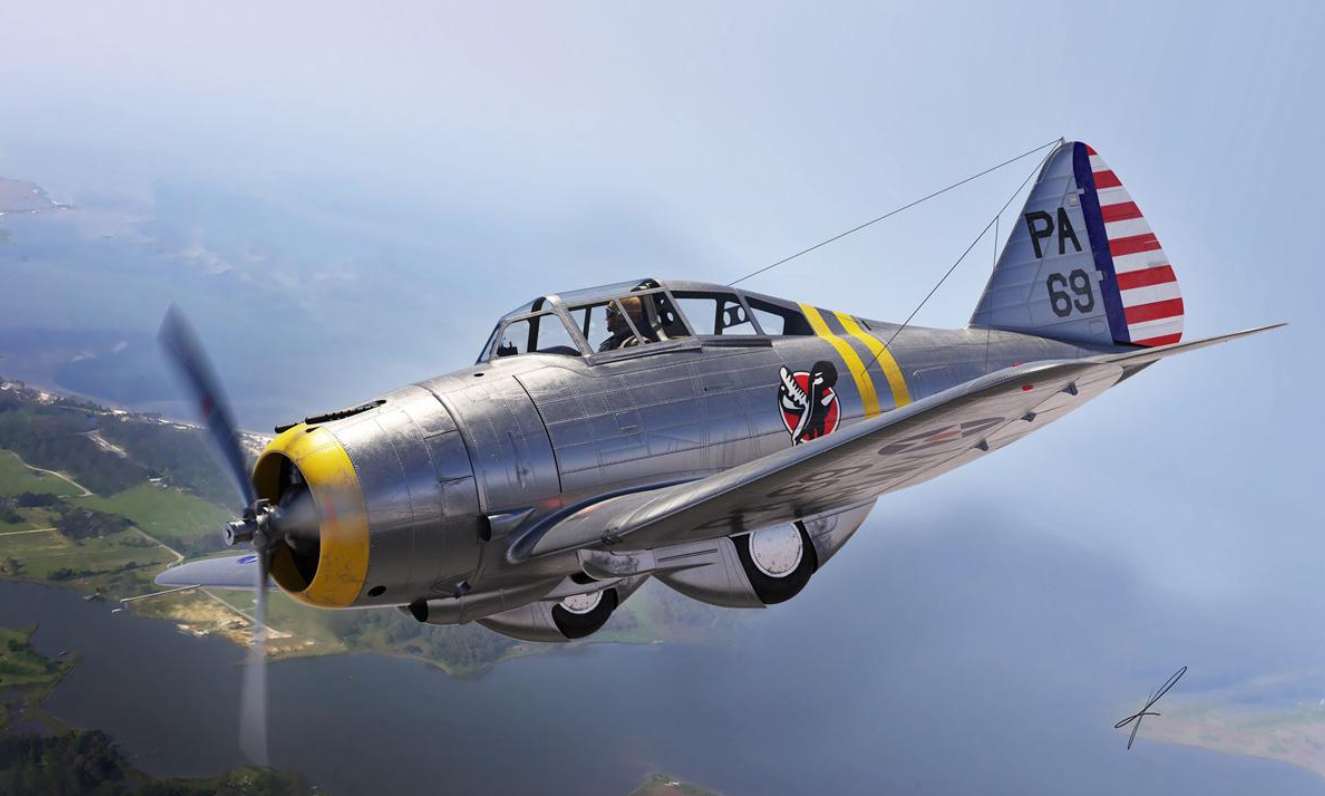
In the harsh domain of air battles, a fighter can mean the difference between winning and a total loss. A great design has the potential to become famous, bringing the likes of the F-16 or Spitfire to the fore, but if accompanied by poor concepts, a hastened development, or unfortunate timing, the result will be a plane turning into a problem. Several aircraft, over time, were unable to meet expectations, thus leaving engineers and military strategists with what could be learned from mistakes.

10. Seversky P-35 (USA)
The Seversky P-35 was originally a ground-breaking design of the 1930s – America’s first all-metal monoplane fighter without fixed landing gear and with a cockpit that was covered. It was outdated by the time WWII started. Production was stopped after only 76 were made, and those that were sent to the Philippines were still in crates with instructions written in Swedish and measurements in metric. Not equipped with armor, self-sealing fuel tanks, and having less firepower, the P-35 was an easy target for the enemy.

9. Messerschmitt Me-210 (Germany)
While the Me-210 was the successor of the Me-110, the Luftwaffe with this new a, aircraft expected safety and great performance which would come from the remote-controlled turrets. However, the plane was unstable, had difficulties flying, and its performance was not better than the old one. Despite warnings, 1,000 planes were ordered before testing, and 400 units with poor results were delivered. Later, the program was withdrawn, and the Me-410 was introduced as a replacement to dissociate the design from the negative reputation.

8. Focke-Wulf Ta-154 Moskito (Germany)
With a fuselage and wings made of wood, this night fighter was Germany’s answer to Britain’s Mosquito. The prototype worked very well until the addition of the operational equipment made the production ones struggle. The Allies’ bombings destroyed the factory that produced the glue for the special adhesive used, leading to the disintegration of the planes. Less than 50 were made, and the remotely controlled versions that were still in the experimental stage were not fully developed.

7. Blackburn B-25 Roc (UK)
The Roc tried to mix a carrier-based aircraft with a powered turret but failed miserably from the start. It was so heavy and slow that its top speed was only 223 mph. It never got to the first line but was used for target towing and stationary defense. The floatplane variant had a terrible performance, even worse than the original one, which was proof of the concept’s disadvantages.

6. Heinkel He-162 Salamander (Germany)
The He-162 was a plywood jet rushed into production during the last period of WWII, designed for young and inexperienced pilots. Due to poor construction and very little testing, it was very fragile and had a high tendency to get into accidents. It hardly contributed any to Germany’s defense.

5. Curtiss-Wright CW-21 Demon (USA)
The CW-21 was a rapid-climbing interceptor that was a lightly armed derivative of a trainer. The U.S. military did not accept it, and it was not very successful in other places, either. The Dutch forces lost all of the CW-21s within a few months after the invasion, and the aircraft faded away quietly from history.

4. Caudron C.714 (France)
The C.714 was originally a racing aircraft that was later turned into a fighter. Although it was cheap and easy to build, it was underengineered and weaponized inadequately. It survived in action for only one week. If even the most desperate countries like Finland were not ready to accept it, then the handful of Polish pilots who only flew it before retirement must have been.

3. Lavochkin-Gorbunov-Gudkov LaGG-3 (USSR)
The main materials used in the LaGG-3 were resin-coated plywood and met, al were very little in amount. It was very heavy, slow, and underpowered, so the pilots nicknamed it “varnished guaranteed coffin. “Even though the design was eventually transformed into the more powerful La-5, the bad reputation from the beginning has had strong lingering effects.

2. Brewster F2A Buffalo (USA)
The Buffalo was a major disappointment in naval aviation, being overweight, slow, and of poor quality. It was very weakly competing against Japanese fighters and got the nickname “Flying Coffin” of the Battle of Midway. Only Finnish pilots made it do something good, and that was by relying on their skills rather than the aircraft. The unsuccessful attempt by Brewster to produce the Corsair followed which eventually led to the company’s shutdown in 1946.

1. McDonnell XF-85 Goblin (USA)
The Goblin is the most bizarre aircraft in history. It was a parasite fighter conceptualized to be released from a B-36 bomber. It was small, underpowered, and almost impossible to reattach in flight. The figure was only created twice and was left behind very soon due to the abandonment of the idea. At present, it is regarded as one of the quirkiest reminders that not all innovative concepts become successful flights.

From the cases of inadequately designed aircraft to their hasty productions, these ten aircraft serve as examples of how even the most promising projects could end up failing spectacularly. Learning from the mistakes ohistoryratheehe success of history, the engineers as well as the pilots are still reminded that innovation alone does not guarantee success.
